Dounreay Team Begins To Empty Reactor Of Nuclear Material
27th September 2017
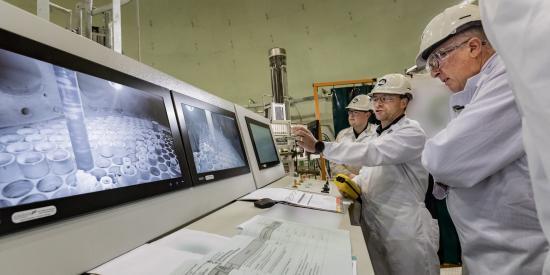
Work is underway to retrieve the last remaining radioactive fuel elements that have been stuck for decades inside the iconic Dounreay Fast Reactor (DFR).
The experimental dome-shaped nuclear reactor once led the world in fast breeder technology and after it closed in 1977 most of the core fuel was removed. But work to remove elements from the breeder zone came to a halt when some were found to be swollen and jammed. Almost 1,000 - around two-thirds of the total - were left in place.
Decommissioning the 58-year-old reactor is one of the most technically challenging projects in the Nuclear Decommissioning Authority (NDA) estate and removing the breeder elements has been a top priority.
Now, after many years of designing and testing remotely-operated equipment, a decommissioning team has started to recover the elements.
It is expected to take around three years to remove them all, after which work can begin on the final dismantling of the landmark reactor.
"Dealing with this material is one of the highest priorities anywhere for the NDA, not just at Dounreay but across our UK sites. The safe and timely retrieval of the breeder material is crucial to both the site's closure programme and the national defueling programme," said David Peattie, NDA Chief Executive. "I am very pleased with this achievement which is a great example of how the Dounreay team and the NDA can work together to deliver results of national importance."
Ron Hibbert, Senior Project Manager at Dounreay Site Restoration Limited (DSRL), the company carrying out the work for the NDA, added: “Reaching this important stage has been a huge achievement by the project team.
“Emptying the reactor vessel of this material is one of the biggest engineering challenges we face in decommissioning the site and it's a great moment for DSRL and our contractors to see their hard work pay off.”
DFR was built in the 1950s at a time when there was a worldwide shortage of uranium for electricity generation. Its core was surrounded by a blanket of natural uranium elements that, when exposed to the effects of the radiation, would “breed” to create a new fuel, plutonium. UK experimentation with fast breeders came to an end in the 1990s.
During a recent visit to the reactor, Jamie Stone, Member of Parliament for Caithness, Sutherland and Easter Ross, said: “Actually watching on screen the removal of an element from the reactor core was fascinating. Seeing the intricate techniques and skills, and the special locally designed equipment being used was absolutely inspirational.
“In an age when sometimes you begin to wonder where British technology is going, it is hugely encouraging to see what is being done at Dounreay. I take my hat off to the workforce.”
When the damaged elements were discovered, decommissioning effectively stopped for 20 years, until the decision was taken in 2000 to close down Dounreay and the creation of the NDA a few years later gave fresh momentum to the task.
The elements were immersed in some 57 tonnes of highly reactive liquid metal which had to be removed and destroyed before remotely-operated cameras could inspect the condition of the material. This programme took more than 10 years.
Now, following extensive research and development trials inside the plant and at a test rig on the outskirts of Thurso, work has started to remove the remaining breeder material.
Photograph: Jamie Stone MP looks on as the Dounreay team removes a fuel element from the reactor.
Related Businesses
Related Articles
TAE Technologies and UKAEA partner to commercialise fusion tech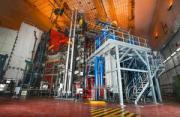
Joint venture to develop neutral beams for fusion and non-fusion applications, creating high-skilled jobs and establishing a critical supply chain. TAE Technologies, a leading US private fusion energy firm with over 25 years at the forefront of scientific innovation, today announces a bilateral and reciprocal investment commitment with the United Kingdom's national fusion laboratory, the UK Atomic Energy Authority (UKAEA) to commercialise TAE's proprietary particle accelerator technology for the global market.
Buried Hazards, Unfinished Business - What the NDA's 2025 Progress Report Really Tells Us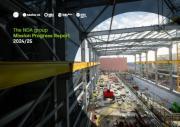
The Nuclear Decommissioning Authority (NDA) has released its 2025 Mission Progress Report is a slightly sprawling document chronicling one of the UK's most complex environmental undertakings. The safe dismantling of its early nuclear legacy.
New recruit officers join the Civil Nuclear Constabulary
The Civil Nuclear Constabulary (CNC) welcomes its newest recruits. The CNC hosted two passing out parades for the graduating Authorised Firearms Officers (AFOs) of Initial Foundation Programme (IFP) 106.
Dounreay's next generation of talent honoured by apprentice award
Nuclear Restoration Services Dounreay's Kate Thomson has won Modern Apprentice of the Year at the Highlands & Islands Apprenticeship Awards in Inverness. Kate, who is in the second year of her apprenticeship in commercial and quantity surveying, said she was thrilled by the honour.
Taskforce calls for radical reset of nuclear regulation in UK
Nuclear Regulatory Taskforce publishes final report and calls for radical reset of overly complex nuclear regulatory system. An overly complex nuclear regulatory system has contributed to the "relative decline" of the UK's ability to deliver faster and cheaper nuclear projects.
Funding approved for Wick Harbour port consultant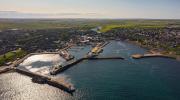
A specialist ports consultant has been appointed to develop a long-term strategic plan for Wick Harbour Authority (WHA) in Caithness. WHA has secured £47,775 from Highlands and Islands Enterprise (HIE) and the Nuclear Restoration Services, NRS Dounreay towards the cost of the services.
Fallon Campbell From Melvich Near Thurso Named As Apprentice of the Year At Awards In London
Rising star from North Scotland honoured at event to celebrate brightest and best in industry. An electrical apprentice from North Scotland is celebrating after being recognised for her contribution to industry at the 13th annual Engineering Construction Industry ECI Training and Development Awards in London.
The NDA Group Graduate Programme: more than a job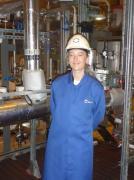
The NDA group graduate scheme offers far more than just a stepping stone into the nuclear industry; it's a chance to grow professionally, explore new places, and become part of a supportive community. Nuala Ledward, Assurance and Performance Graduate, shares how her secondment to Dounreay brought these benefits to life.
UKAEA develops 3D printing for fusion components
At its recently opened Central Support Facility (CSF), UKAEA has commissioned an electron beam additive manufacturing machine that can be used to incorporate tungsten into components, alongside a selective laser manufacturing machine. Fusion can play a key role in a global low carbon energy future.Advancing Fusion Remote Maintenance: Industry Collaboration Driving Innovation
As part of the Fusion Futures (FF) programme, UKAEA's Remote Applications in Challenging Environments (RACE) has partnered with industry leaders to develop two groundbreaking technologies for remote maintenance in fusion energy engineering. Thanks to FF funding, industry has taken the lead in maturing UKAEA technology concepts—delivering real-world solutions that enhance operational autonomy and reduce maintenance burdens in extreme environments.
